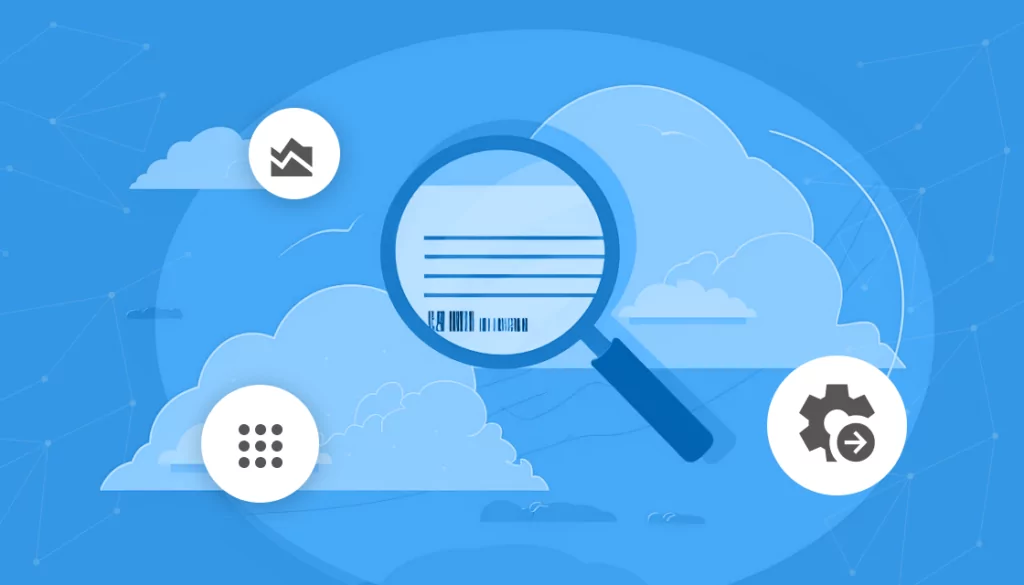What Are IT Compliance Standards?
IT compliance standards are established rules and guidelines designed to ensure that organizations manage and protect their information technology systems and data in accordance with legal, regulatory, and industry requirements.
These standards cover a wide range of areas, including information security, data protection, and risk management, and are essential for maintaining the confidentiality, integrity, and availability of information assets. Compliance with these standards is critical for organizations to avoid legal penalties, safeguard against data breaches, and build trust with customers and stakeholders by demonstrating a commitment to cybersecurity and privacy.
Adhering to IT compliance standards helps organizations align their IT practices with best practices and regulatory expectations, thereby mitigating risks associated with cyber threats, data loss, and system vulnerabilities. It involves regular audits, assessments, and certifications to ensure ongoing compliance. This is part of a series of articles about IT asset management.
Table of Contents
ToggleWhy Are IT Audits and Why Are They Important?
IT audits are structured evaluations that assess the effectiveness of an organization’s information technology infrastructure, policies, and operations. They are important because they help organizations identify potential security vulnerabilities, ensure compliance with relevant IT standards and regulations, and evaluate the efficiency and effectiveness of their IT systems and controls.
Many compliance standards require IT audits, which might be internal or external, to confirm compliance or achieve certification. We discuss several of these standards below. Beyond their role in compliance, IT audits can provide multiple benefits to organizations:
- Uncovering discrepancies and weaknesses in the IT environment.
- Improving corporate governance by providing senior management and stakeholders with a neutral review of IT and security practices.
- Enabling better risk management by identifying and evaluating risks associated with IT resources.
Common Compliance Standards and Their IT Auditing Requirements
Here are some of the main compliance standards that require or involve IT audits:
1. ISO/IEC 27001
ISO/IEC 27001 is a globally recognized standard that provides the framework for an information security management system (ISMS). This standard helps organizations to manage the security of assets such as financial information, intellectual property, employee details, or information entrusted by third parties.
IT audits for ISO/IEC 27001 focus on verifying whether the ISMS aligns with the standard’s requirements, including the assessment of risk management procedures, security controls, and the effectiveness of the organization’s policy for information security. Auditors review documentation, interview staff, and perform tests to ensure continuous improvement and compliance with the standard.
Learn more: https://www.iso.org/standard/27001
2. SOC 2
Service Organization Control 2 (SOC 2) is designed for service providers storing customer data in the cloud, focusing on five trust service principles: security, availability, processing integrity, confidentiality, and privacy.
IT audits for SOC 2 assess how well an organization complies with one or more of the trust principles based on their business practices. The audit process involves a thorough examination of an organization’s systems and processes to ensure they meet the relevant criteria for safeguarding customer data and privacy. It requires a detailed report that includes the auditor’s opinion on the effectiveness of the controls in place.
Learn more: https://www.aicpa-cima.com/topic/audit-assurance/audit-and-assurance-greater-than-soc-2
3. PCI DSS
The Payment Card Industry Data Security Standard (PCI DSS) is a set of security standards designed to ensure that all companies that accept, process, store, or transmit credit card information maintain a secure environment.
IT audits for PCI DSS involve assessing the organization’s adherence to the standard’s requirements, which include protecting cardholder data, maintaining a vulnerability management program, and implementing strong access control measures. The audit process helps identify and rectify security gaps in payment card operations, minimizing the risk of data breaches.
Learn more: https://pcidssguide.com/what-are-the-pci-dss-audit-requirements/
4. COBIT
Control Objectives for Information and Related Technologies (COBIT) is a voluntary framework for IT management and governance. It provides an exhaustive set of best practices for IT operational processes and helps organizations ensure that their IT is aligned with business goals, manages risks effectively, and provides value to the business.
IT audits based on COBIT standards evaluate the governance and management of enterprise IT environments, focusing on performance and risk management to ensure that IT processes support the organization’s strategic objectives.
Learn more: https://www.isaca.org/resources/cobit

Lanir specializes in founding new tech companies for Enterprise Software: Assemble and nurture a great team, Early stage funding to growth late stage, One design partner to hundreds of enterprise customers, MVP to Enterprise grade product, Low level kernel engineering to AI/ML and BigData, One advisory board to a long list of shareholders and board members of the worlds largest VCs
Tips from the Expert
In my experience, here are tips that can help you better manage IT compliance standards:
-
Automate compliance tasks
Use tools to track updates, manage documentation, and monitor compliance in real time, reducing errors and saving effort.
-
Design with compliance in mind
Build compliance requirements into IT systems from the start to avoid costly adjustments later.
-
Tie compliance to business goals
Align compliance efforts with organizational objectives to show added value, like boosting customer trust.
-
Run pre-audit checks
Conduct internal reviews to spot and fix issues before external audits, increasing success rates.
-
Form a cross-functional team
Include IT, legal, and operations in compliance planning to ensure a thorough and unified approach.
Frameworks and Guidelines Supporting IT Audits
In addition to the above compliance standards, there are a number of frameworks that help organizations comply with standards, pass audits, and improve IT quality and security:
5. IPPF
The International Professional Practices Framework (IPPF) is a comprehensive set of guidance materials developed by The Institute of Internal Auditors (IIA) to promote and improve the practice of internal auditing. It serves as a foundational reference for internal auditors to ensure consistency, coherence, and alignment with international standards and best practices.
The IPPF includes mandatory elements such as the Definition of Internal Auditing, the Code of Ethics, and the International Standards for the Professional Practice of Internal Auditing, which provide the critical framework for conducting effective IT audits. By adhering to the IPPF, organizations can enhance their audit processes to be more systematic, disciplined, and aligned with global standards, thereby improving the overall effectiveness and value of the audit function within IT environments.
Learn more: https://www.theiia.org/en/standards/international-professional-practices-framework/
6. NIST Cybersecurity Framework
The National Institute of Standards and Technology (NIST) Cybersecurity Framework is a voluntary framework that consists of standards, guidelines, and best practices to manage cybersecurity-related risk. The framework’s core functions—Identify, Protect, Detect, Respond, and Recover—offer a high-level, strategic view of the lifecycle of an organization’s management of cybersecurity risk.
For IT audits, the NIST Cybersecurity Framework provides a structured and flexible approach for assessing and improving an organization’s ability to prevent, detect, and respond to cyber incidents. By leveraging this framework, organizations can evaluate their current cybersecurity practices against industry standards, identify areas of improvement, and enhance their overall security posture.
Learn more: https://www.nist.gov/cyberframework
7. ITIL
IT Infrastructure Library (ITIL) is a set of detailed practices for IT service management (ITSM) that focuses on aligning IT services with the needs of business. ITIL provides a framework for planning, delivering, and supporting IT services and processes. The framework is structured around the service lifecycle, including service strategy, service design, service transition, service operation, and continual service improvement.
In the context of IT audits, ITIL offers guidance on best practices for managing IT services efficiently and effectively. Auditors can use ITIL to assess the organization’s ITSM practices, identify areas for improvement, and ensure that IT services are delivered in a way that supports business objectives and delivers value.
Learn more: https://www.axelos.com/certifications/itil-service-management/itil-4-foundation
8. COSO Framework
The Committee of Sponsoring Organizations of the Treadway Commission (COSO) Framework is a leading model for designing, implementing, and conducting internal control and assessing the effectiveness of a company’s internal controls.
The framework is structured around five interrelated components: control environment, risk assessment, control activities, information and communication, and monitoring activities. These components provide an integrated approach to risk management and internal control, which is applicable to IT audits. By applying the COSO Framework, organizations can establish and maintain an effective internal control system that supports business objectives, enhances the reliability of financial reporting, and complies with laws and regulations.
IT audits utilizing the COSO Framework can help organizations identify and mitigate IT-related risks and ensure the integrity, confidentiality, and availability of information systems and data.
Learn more: https://www.coso.org/guidance-on-ic
Faddom: Easier IT Audits with Application Dependency Management
Faddom makes IT audits easier and more efficient by providing a comprehensive visualization of your entire on-premises and cloud infrastructure—delivered in under an hour. With Faddom, you can instantly see all servers, applications, and their interdependencies, ensuring accurate documentation and eliminating blind spots. This clarity streamlines compliance processes, enhances IT governance, and supports better decision-making.
Start your free trial today to experience faster, smarter IT audits!










